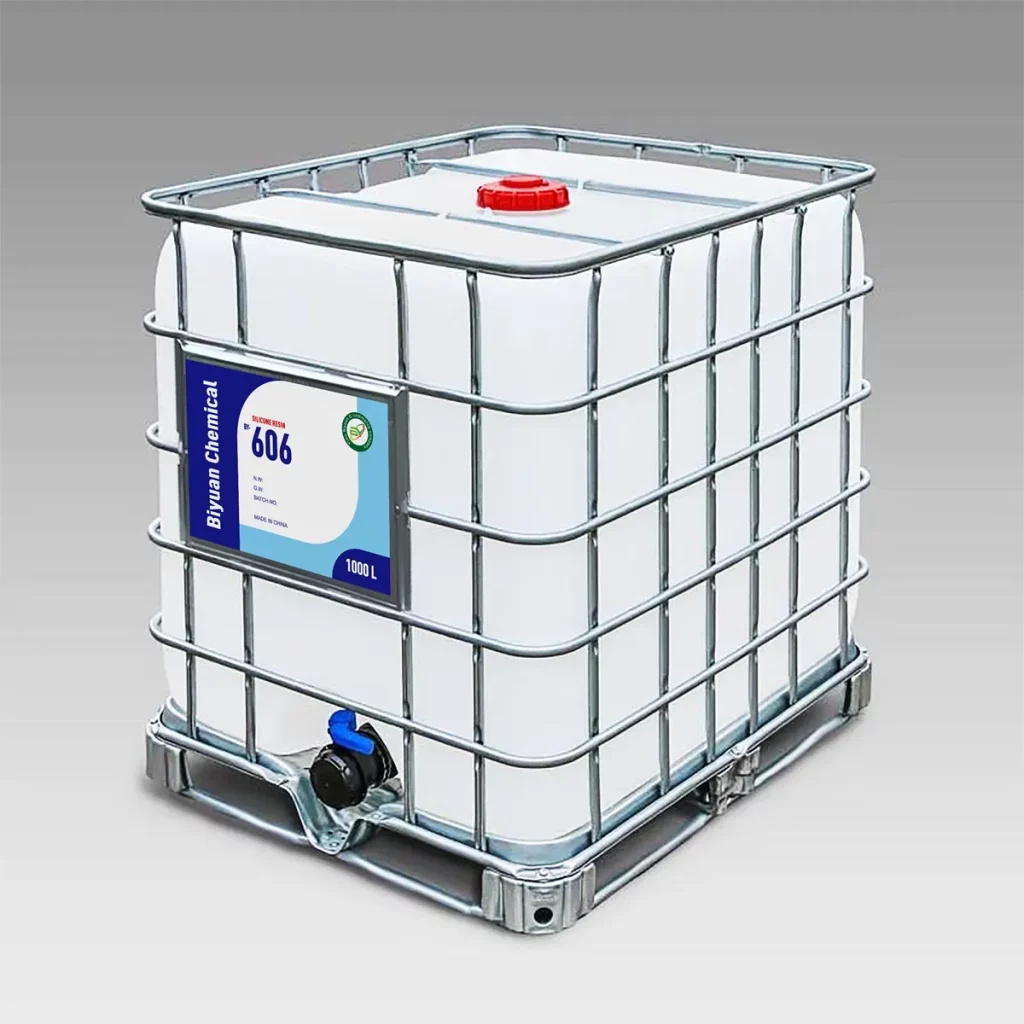SILICONE RESIN FOR COATINGS - Silicone Resin Factory&supplier
Silicone Resin
Everything you need to know about our products and company
Silicone resins deliver breakthrough performance in coating applications through their exceptional weather resistance and thermal stability. These advanced materials form durable, protective networks that maintain integrity under extreme environmental conditions, including prolonged UV exposure and temperatures ranging from -50°C to 300°C.
Meeting international standards for durability and safety, silicone resin-based coatings represent the next generation of protective solutions, combining long-term performance with reduced environmental impact through extended maintenance intervals and reduced material consumption.
Basic Product Information
Chemical Properties
Physical Properties
Product Functions
Application Scope
Widely Applied: Used for high-temperature industrial equipment (e.g., boilers, furnaces, chimneys), providing reliable protection against high temperatures and corrosion.
Versatile Use: Enhances performance in exterior walls, roofs, and interior decorative coatings, ensuring long-term protection and aesthetic appeal for buildings.
Durability & Aesthetics: Critical for OEM and refinish paints, improves weather resistance, hardness, and gloss, maintaining a vibrant and durable automotive finish.
Enhanced Protection: Boosts wear resistance, water resistance, and weather resistance for wood surfaces, safeguarding against environmental damage while enhancing texture and decorative appeal.
Core Advantages
| Advantages | Technical Parameters | Industry Value |
| High-Temperature Resistance | Long-term stability at 300°C; short-term tolerance up to 500°C | Industrial equipment, aerospace (high-temperature protection) |
| Exceptional Weather Resistance | QUV aging test: 2000h without chalking | Architectural curtain walls, bridges (long-lasting aesthetics) |
| Chemical Inertness | Resistant to 10% acids/alkalis/solvents (no corrosion after 168h) | Chemical, marine engineering (corrosion protection) |
| Electrical Insulation | Volume resistivity ≥10¹⁵ Ω·cm | High-voltage cables, semiconductor packaging |
| Environmental Compliance | VOC <50 g/L; formaldehyde-free | Suitable for sensitive environments (e.g., hospitals, food facilities) |
Market Overview & Key Drivers
Global Market Overview
Technology Trends & Market Opportunities
Market Drivers: EU REACH, China’s “Dual Carbon” policy (carbon peaking and neutrality), and global VOC reduction mandates.
Technology Breakthroughs:
Self-emulsifying silicone resins (solid content >40%).
Solvent-free UV-curing systems.
Market Forecast: Waterborne silicone coatings to account for 40%+ of the market by 2030.
Self-Cleaning Coatings: TiO₂/silicone composites for photocatalytic pollutant degradation.
Thermochromic Coatings: Infrared-reflective coatings for building energy efficiency.
Anti-Corrosion/Self-Healing Coatings: Microencapsulated corrosion inhibitors + silicone resin matrices.
PV Coatings: Growth aligned with global solar installations (projected to reach 1 TW by 2030).
Battery Fire-Resistant Coatings: Driven by EV demand (e.g., silicone resin + ceramic fiber composites).
Experimental Data & Case Studies
Experimental Data
| Test Item | Test Condition | Result | Benchmark Comparison |
| Salt Spray Resistance | 5,000-hour salt spray test | No blistering or corrosion | Epoxy resin: Failure at 2,000h |
| Adhesion | Cross-cut test (ISO 2409) | Grade 0 (no peeling) | Polyurethane coatings: Grade 1–2 |
| Light Transmittance | 1mm thickness (ASTM D1003) | 92% | PC plastic: 88% |
Case Studies

Preparation Process, Core Technologies & Key Considerations
Preparation Process
Hydrolysis: Monomers react with water under catalysis to form silanols.
Polycondensation: Silanols polymerize into silicone resin prepolymers.
Temperature: Hydrolysis: 20–80°C; Polycondensation: 80–150°C.
Time: 2–10 hours.
Stirring: Continuous mixing to ensure homogeneity.
Room Temperature: Several hours to days.
Heat Curing: 60–150°C for 0.5–2 hours (accelerates solvent evaporation and cross-linking).
Final Coating: Forms a robust, cross-linked film upon curing.
Core Technologies
Monomer Selection & Ratio: Tailor monomer types (e.g., methyltrimethoxysilane, phenyltrimethoxysilane) and ratios to regulate crosslink density, flexibility, and weather resistance.
Advanced Processes: Utilize emulsion polymerization or sol-gel methods to enhance resin stability and performance.
Reaction Optimization: Strictly control temperature, pH, and reaction time to achieve target molecular structures.
Example: Adjusting vinyl monomer content improves flexibility for high-temperature coatings.
Introduce functional groups (e.g., epoxy, amino) to enhance adhesion via covalent bonding with substrates.
Hybridize with epoxy (for hardness) or acrylic resins (for flexibility) to balance performance.
Example: Silicone-epoxy hybrids achieve >5 MPa adhesion to metals.
Use dispersants (e.g., polyurethane-based) and equipment (e.g., sand mills) to achieve particle sizes <10 μm.
Optimize parameters: 2,000–4,000 rpm for 30–60 minutes.
Amine-based or acid anhydride-based curing agents for tailored crosslinking speed and density.
Thermal curing: 120–180°C for 1–4 hours for optimal hardness (≥2H pencil hardness).
Moisture curing: Ambient conditions for thick coatings.
Degrease, sandblast, or apply plasma treatment to increase surface energy (>50 mN/m).
Use primers (e.g., silane adhesion promoters) for covalent bonding on metals/glass.
Conditions: Store in a cool (5–25°C), dry, sealed container.
Shelf Life: 12 months (avoid freezing or prolonged heat exposure).
PPE: Wear N95 masks, goggles, and gloves during handling.
Ventilation: Ensure adequate airflow to minimize solvent vapor inhalation.
Packaging & Ordering
Packaging: 200kg/1000kg plastic drums (customizable).
Our most popular products loved by customers worldwide
Silicone resins transform release agent technology through their exceptional thermal stability and non-stick properties. These high-performance materials create durable, cross-linked release layers that prevent adhesion in demanding molding and casting applications. The resins withstand temperatures exceeding 300°C while maintaining consistent release p.
Silicone resins deliver breakthrough performance in coating applications through their exceptional weather resistance and thermal stability. These advanced materials form durable, protective networks that maintain integrity under extreme environmental conditions, including prolonged UV exposure and temperatures ranging from -50°C to 300°C. Meeting inter.
Silicone resins significantly enhance plastic and rubber products through their unique cross-linking capabilities and surface modification properties. These high-performance additives improve thermal stability, weather resistance, and processing characteristics across various polymer systems. Meeting international industry standards, silicone resins off.
Silicone resins deliver exceptional thermal stability (up to 400°C) and mechanical strength to composite materials. These high-performance resins improve processing efficiency while enhancing electrical insulation and flame retardancy. Compatible with organic and inorganic fillers, they ensure uniform distribution and strong interfacial adhesion. The re.